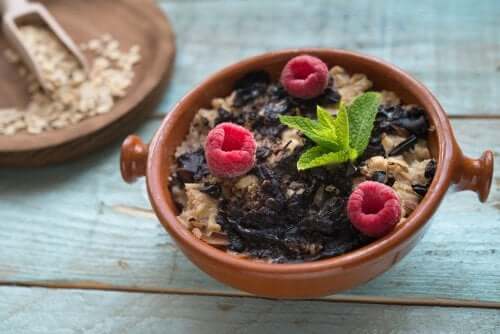All You Need to Know About the Real Food Movement

In recent years, the term “real food movement” has spread throughout the world, especially on social media. Every single day, more and more individuals are choosing to follow this diet, based on just what the name says: Eating real food.
The followers of this philosophy call themselves “realfooders.” So, what’s this new trend all about?
What is the real food movement?
According to the creator of the real food movement, Carlos Rios, realfooding consists of following a lifestyle based on eating real food rather than ultra-processed foods.
At first sight, it may seem like this movement is encouraging us to run out screaming from the supermarket. Of course, that’s where we find the largest selection of processed foods. However, the realfooding lifestyle does include a category of exceptions.

The foods in this category have undergone some sort of processing, either industrial or artisanal. However, in regards to the intrinsic health properties of these foods, they’re either harmless or even beneficial.
Furthermore, these processes have the goal of making the foods last longer and to be safer and easier to eat. The processing may be mechanical, physical or chemical.
- Extra virgin olive oil.
- Ultra-pasteurized milk.
- Fermented dairy products (yogurt or kefir).
- Canned legumes.
- Fish a seafood preserves.
- Whole grain pasta.
- Whole grain bread.
- Frozen vegetables.
Why be a realfooder?
The reasons that may motivate us to choose the realfooding lifestyle can be numerous and diverse. One of three main factors that drives a lot of individuals towards this change is their health.
In recent decades, we’ve witnessed an alarming increase in obesity rates worldwide, with no signs of that changing. This is true both for children and for adults. What’s more, the rates or related illnesses, such as type 2 diabetes, hypertension, high cholesterol, etc, are also on the rise.
The situation is worsening, and so are bad eating habits, including the excessive consumption of ultra-processed foods. To combat this epidemic, a change needs to occur, starting with incorporating healthy lifestyle and nutrition habits at home.
Among these habits or practices we should include a diet based on eating real and healthy foods. For example, fruits, vegetables, leafy greens, legumes, nuts, seeds, lean meats, fish, eggs and dairy products.
What’s more, we need to exercise every day. By changing these habits, modern society will be able to maintain its long-term physical and psychological well-being.
Can we all be realfooders?
If you’ve been asking yourself this question, the answer is a resounding YES! We all can and should cut out ultra-processed foods and eat real foods. Everyone in your house, from the smallest members to the oldest, can all benefit from this lifestyle change.
As for children, the benefits of the real food movement are greater and more effective in the long term. It’s during our early years that we develop the eating habits that characterize and influence us in the future.
What better than to instill good eating habits when our children are still small?

However, the implementation of these habits in children isn’t always easy. That’s why we want to take this opportunity to offer you a list of suggestions to help you in this task:
- Prepare colorful and varied meals. If you use just a bit of imagination, you’ll manage to surprise your kids and present irresistible healthy foods.
- Remove ultra-processed foods from your shopping list. If all you have on hand at home is healthy food, then that’s what you’ll reach for when you’re hungry. However, if you have junk food in your cupboards, even if they’re just for every once in a while, you’ll probably eat them more than you should.
- Set a good example. Children learn by imitation. So then, there’s nothing better for them than seeing their role models eating and enjoying healthy foods.
- Get your children involved. Take them shopping with you and let them help you prepare different dishes. Without a doubt, there’s no better way for them to get to know healthy foods than by experimenting with them.
In recent years, the term “real food movement” has spread throughout the world, especially on social media. Every single day, more and more individuals are choosing to follow this diet, based on just what the name says: Eating real food.
The followers of this philosophy call themselves “realfooders.” So, what’s this new trend all about?
What is the real food movement?
According to the creator of the real food movement, Carlos Rios, realfooding consists of following a lifestyle based on eating real food rather than ultra-processed foods.
At first sight, it may seem like this movement is encouraging us to run out screaming from the supermarket. Of course, that’s where we find the largest selection of processed foods. However, the realfooding lifestyle does include a category of exceptions.

The foods in this category have undergone some sort of processing, either industrial or artisanal. However, in regards to the intrinsic health properties of these foods, they’re either harmless or even beneficial.
Furthermore, these processes have the goal of making the foods last longer and to be safer and easier to eat. The processing may be mechanical, physical or chemical.
- Extra virgin olive oil.
- Ultra-pasteurized milk.
- Fermented dairy products (yogurt or kefir).
- Canned legumes.
- Fish a seafood preserves.
- Whole grain pasta.
- Whole grain bread.
- Frozen vegetables.
Why be a realfooder?
The reasons that may motivate us to choose the realfooding lifestyle can be numerous and diverse. One of three main factors that drives a lot of individuals towards this change is their health.
In recent decades, we’ve witnessed an alarming increase in obesity rates worldwide, with no signs of that changing. This is true both for children and for adults. What’s more, the rates or related illnesses, such as type 2 diabetes, hypertension, high cholesterol, etc, are also on the rise.
The situation is worsening, and so are bad eating habits, including the excessive consumption of ultra-processed foods. To combat this epidemic, a change needs to occur, starting with incorporating healthy lifestyle and nutrition habits at home.
Among these habits or practices we should include a diet based on eating real and healthy foods. For example, fruits, vegetables, leafy greens, legumes, nuts, seeds, lean meats, fish, eggs and dairy products.
What’s more, we need to exercise every day. By changing these habits, modern society will be able to maintain its long-term physical and psychological well-being.
Can we all be realfooders?
If you’ve been asking yourself this question, the answer is a resounding YES! We all can and should cut out ultra-processed foods and eat real foods. Everyone in your house, from the smallest members to the oldest, can all benefit from this lifestyle change.
As for children, the benefits of the real food movement are greater and more effective in the long term. It’s during our early years that we develop the eating habits that characterize and influence us in the future.
What better than to instill good eating habits when our children are still small?

However, the implementation of these habits in children isn’t always easy. That’s why we want to take this opportunity to offer you a list of suggestions to help you in this task:
- Prepare colorful and varied meals. If you use just a bit of imagination, you’ll manage to surprise your kids and present irresistible healthy foods.
- Remove ultra-processed foods from your shopping list. If all you have on hand at home is healthy food, then that’s what you’ll reach for when you’re hungry. However, if you have junk food in your cupboards, even if they’re just for every once in a while, you’ll probably eat them more than you should.
- Set a good example. Children learn by imitation. So then, there’s nothing better for them than seeing their role models eating and enjoying healthy foods.
- Get your children involved. Take them shopping with you and let them help you prepare different dishes. Without a doubt, there’s no better way for them to get to know healthy foods than by experimenting with them.
All cited sources were thoroughly reviewed by our team to ensure their quality, reliability, currency, and validity. The bibliography of this article was considered reliable and of academic or scientific accuracy.
- Obesidad y sobrepeso. (2017). Organización Mundial de la Salud. Disponible en: http://www.who.int/mediacentre/factsheets/fs311/es/
- Agencia de Seguridad Alimentaria y Nutrición (AECOSAN). (2011).Estudio de prevalencia de obesidad infantil “ALADINO”. Madrid. Disponible en:http://www.diba.cat/documents/713456/1561316/Presentaci%C3%B3%20ALADINO.pdf?version=1.0
- Ministerio de Sanidad y Consumo. (2005). Estrategia para la nutrición, actividad física, prevención de la obesidad (NAOS). Madrid: Ministerio de Sanidad y Consumo. Disponible en: http://www.aecosan.msssi.gob.es/AECOSAN/docs/documentos/nutricion/estrategianaos.pdf
This text is provided for informational purposes only and does not replace consultation with a professional. If in doubt, consult your specialist.








